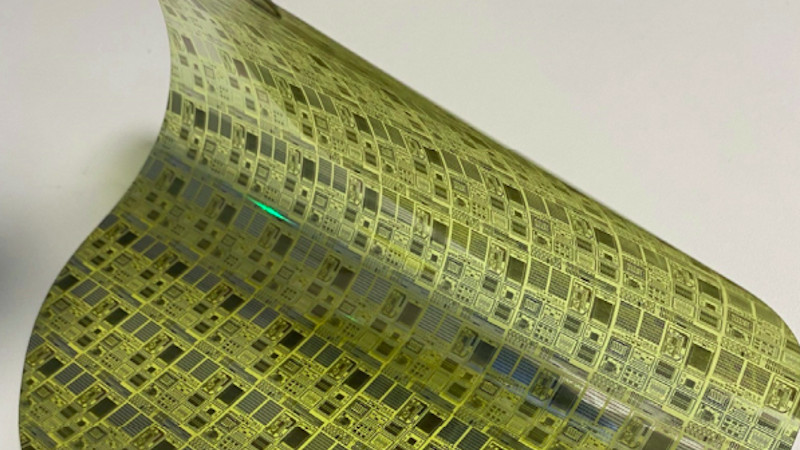While our attention is mostly directed towards ever smaller-integrated silicon circuits providing faster and faster computing, there’s another area of integrated electronics that operates at a much lower speed which we should be following. Thin-film flexible circuitry will provide novel ways to place electronics where a bulky or expensive circuit board with traditional components might be too expensive or inappropriate, and Wikichip is here to remind us of a Leuven university team who’ve created what is claimed to be the fastest thin-film flexible microprocessor yet. Some of you might find it familiar, it’s our old friend the 6502.
The choice of an archaic 8-bit processor might seem a strange one, but we can see the publicity advantage — after all, you’re reading about it here because of it being a 6502. Plus there’s the advantage of it being a relatively simple and well-understood architecture. It’s no match for the MHz clock speeds of the original with an upper limit of 71.4 kHz, but performance is not the most significant feature of flexible electronics. The production technology isn’t quite ready for the mainstream so we’re unlikely to be featuring flexible Commodore 64s any time soon, but the achievement is the impressive feat of a working thin-film flexible microprocessor.
Meanwhile, if you’re curious about the 6502, we took a look at the life of its designer, [Chuck Peddle].
















Hmmm, a step closer to making the “Young Lady’s Illustrated Primer” in the form factor of an actual book perchance?
Was having a discussion about this just a weekish ago, The “Primer” itself wouldn’t be that hard to build today, just a pair of displays inside a book cover with a modest processor and cellular connection. The second part of the “Primer” was the intelligence, not as smart as the book describes but we do have alexa, cortana, siri, and google assistant doing the same thing at much less controlled and refined levels. So the last part of what made the “Young Lady’s Illustrated Primer” unique it used gig working actors for some of the interactive parts – not impossible but a large expense but easily substituted with a non live video. So really rudimentary primers are already just apps on your smart phone that large corporations are using to train us to be the consumers that they want.
My impression was that the *important* part of the Young Lady’s Illustrated Primer was that it was a genius-level piece of applied pedagogy; a masterwork of the theory and application of teaching. In other words, the intelligence built into it was the most important thing.
Maybe I’m just under-estimating the state of educational software but I think anything we could build today would be a pale shadow of the Primer, and *not* because of the inferior display technology.
Yes, I agree that the intelligence was the most important part, and it would be very difficult to achieve that level today but look at it in context, in the book the “primer” was commissioned by an equity lord to help raise his grandchild alongside a normal education within the social norms of his strict community standards, so it was bespoke at great expense. So if say tomorrow someone like Elon Musk decided that he wanted to give his child something like the primer so he called in some geeks who shared his social/political views and said “I want this in 2 years here is a half a billion dollars to start with” then I think that he could get a pretty close approximation of the primer but that it would be very difficult to open source it afterwards and use it for groups of different social/political backgrounds.
Yes, that coulllllld be done, but it would be as truly primery as cyberdecks are actually cyberdecky IMO
smartphones are already dong this with just an “assistant” app. just you dont get to choose what what values they are teaching your young. welcome to the new dystopia with brighter colors and cheerful puppets.
No flexible C-64 YET!
Reminds me of the ‘Z80 on Glass’ from 20 years ago.
https://original.sharpmz.org/z80glass.htm
Great to see this sort of thing progressing.
I imagine future tablet and mobile phone’s would be manufactured using a roll to roll process.
Just “spray” on the touch sensor layer, oled on the other side, followed by circuit and battery, folded in to a phone shape.
Why would you fold such a paper thin computer?
With an E-ink display one could more or less have a digital paper with the all so desired undo function.
“Why would you fold”…because the touch surface needs to be on the other side of the screen, and putting screen/logic/transceivers and battery in one stack would make it too fragile.even with 3 folds it would still be paper thin (excluding battery and transceivers of course)
I just want my digital newspaper, where I can block the sun, ignore people, then roll it up and swat flies!
There are already flexible, 32-bit ARM processors. This is far from anything new.